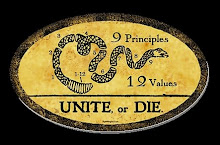 Three years ago, archaeologists in Germany made what they described as a lucky find: a group of four graves near the Saale River, dating back to the Late Stone Age, 4,600 years ago. The graves contained two to four bodies each, adults and young children, all buried at the same time. The bodies were arranged in such a way - face to face in some cases, with arms and hands linked - that clearly the site told a tale.
Three years ago, archaeologists in Germany made what they described as a lucky find: a group of four graves near the Saale River, dating back to the Late Stone Age, 4,600 years ago. The graves contained two to four bodies each, adults and young children, all buried at the same time. The bodies were arranged in such a way - face to face in some cases, with arms and hands linked - that clearly the site told a tale. Using DNA analysis and other techniques, Wolfgang Haak and Guido Brandt of Johannes Gutenberg University Mainz and colleagues have pieced together parts of the story. Their findings are in The Proceedings of the National Academy of Sciences.
One of the graves contained a woman with three children, at least two of whom were not hers. The researchers suggest the woman might be their aunt or a stepmother. Another grave contained a family of four, according to the analysis - making it the oldest molecular genetic evidence of a nuclear family ever obtained.
"Normally a family doesn't die at the same time," Dr. Haak said. So that was one clue to what happened. Others were found in bones: fractured skulls, an arrowhead in a spine and signs of defensive injuries to arms and hands.
Dr. Haak, who is now at the University of Adelaide in Australia, said the evidence suggested that the community was attacked. Adolescents and young adults were either not present - perhaps they were working in fields - or were able to escape, while younger children and older adults were killed. But then the survivors returned and, with intimate knowledge of the relationships among the dead, properly buried them.
Dr. Haak said the study showed the usefulness of employing multiple analytical tools to gain information about a site. "It's an example of what the potentials are for archaeology these days," he said.
Walter
The Proceedings of the National Academy of Sciences































No comments:
Post a Comment